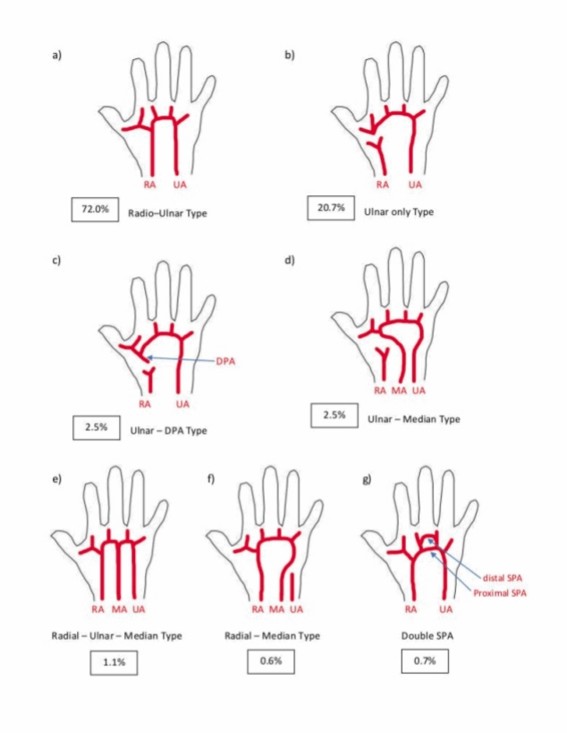The median artery is the main vessel supplying blood to the forearm and the hand in utero. It disappears around the 8th week of intrauterine life when it turns into two arteries, the radial and the ulnar artery.
In 10 to 30 % of the population, there is a persistence of a medial artery of the forearm, which usually originates from the ulnar artery (in continuity with the anterior interosseous artery) and the path of which is parallel to the median nerve. There seems to be an increase in the incidence of this abnormality, now considered as a variant, over the last 100 years.
The abnormality is unilateral in 67 % of cases and is associated with an abnormality of the median nerve (bifid median nerve) in 70 % of cases.
One distinguishes :
- a forearm variant : when the artery ends up in the forearm
- a palmar variant : when the artery passes through the carpal tunnel (picture) before entering the palm and contributing the the vascularization of some digits.
A median artery is found in 3.1 % of variants in case of complete superficial palmar arch and in 11.9 % of variants in case of superficial incomplete palm arch (figures). The presence of a median artery therefore increases the risk of the patient presenting an incomplete superficial palmar arch.

Variants in case of complete superficial palmar arch;
_EN.jpg)
.jpg)
Variants in case of incomplete superficial palmar arch
Anesthetic implications:
given the increased risk of incomplete surface palm arch, it is probably prudent to avoid catheterizing one of the wrist arteries in the presence of a medial artery. Risk of bleeding during carpal tunnel surgery.
References :
- Zarzecki MP, Popieluszko P, Zayachkowski A, Pękala PA, Henry BM, Tomaszewski KA.
The surgical anatomy of the superficial and deep palmar arches: a meta-analysis.
J Plast Reconstr Aesthet Surg. 2018;71:1577-92.
- Lucas T, Kumaratilake J, Henneberg M.
Recently increased prevalence of the human median artery of the forearm: A microevolutionary change.
Journal of Anatomy 2020 ; 237 : 623-31
Updated: April 2021